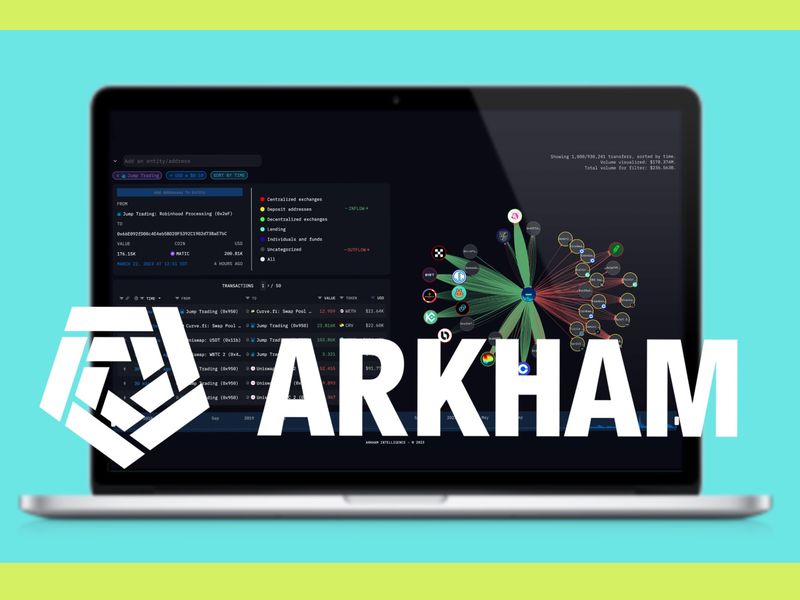MARKETS DAILY: The Nakamoto.com Debacle
After a dramatic start to 2020, bitcoin is down today for the second straight day. Markets Daily is back with the news moving markets over the last 24 hours, plus a look at Nakamoto.com’s troubled launch and how it relates to ‘Bitcoin Maximalism’. Later, Brad breaks down a new paywalled report on the upcoming bitcoin “Halving”
No time to listen? scroll down for the complete episode transcript…
- Crypto markets, industry and international news roundup
- A brief look at both sides of the recent Nakamoto.com debacle
- The new report out on bitcoin’s upcoming halving (paywalled)
More ways to Listen or Subscribe:
Transcript:
Adam B. Levine:
On today’s episode, Bitcoin Markets take a breather, the Nakamoto Debacle and a new report on the upcoming bitcoin halving.
Adam B. Levine: It’s JANUARY 9, 2020, and you’re listening to Markets Daily, I’m Adam B. Levine, editor of Podcasts here at CoinDesk, along with our senior markets reporter, Brad Keoun, to give you a concise daily briefing on crypto markets and some of the most important news developments in the sector over the past 24 hours.
DAILY NEWS ROUNDUP
Brad Keoun: Bitcoin down today for the second straight day, slipping just below $8,000 about halfway through the trading day
The market apparently taking a breather after a pretty dramatic rally at the start of the year, but prices still up about 10 percent so far in 2020
Adam: Now there’s a raging debate among investors over whether bitcoin should be considered a risky asset that trades like U.S. stocks, or a safe-haven asset that trades like gold.
Bitcoin’s price surge, in the wake of the U.S. killing earlier this month of Iran’s top commander, lent credence to the safe-haven narrative.
And one thing that’s interesting here, Brad, is that as we see a de-escalation of some of the tensions between the U.S. and Iran, we’re seeing bitcoin trade off a little bit.
Brad: Turning to the news, the appointment of Kelly Loeffler, former CEO of the crypto exchange Bakkt, to serve as the new U.S. senator from Georgia is raising some thorny questions about conflicts of interest.
That’s partly because her husband, Jeffrey Sprecher, is CEO of Bakkt’s parent company, the Intercontinental Exchange, whose biggest competitor is the Chicago futures exchange CME, which also operates in the crypto markets.
Many crypto industry advocates were thrilled when Loeffler was appointed to the Senate, believing she would serve as an informed voice in the U.S. Congress.
And on Wednesday the news emerged that, indeed, Loeffler will serve on the Senate Agriculture Committee, which oversees the primary regulator that oversees U.S. futures exchanges, the Commodity Futures Trading Commission.
But amid concerns the appointment might create a conflict of interest, Loeffler told the Wall Street Journal she would recuse herself if needed on a case by case basis.
Adam: And – in the closely watched market for stablecoins, the competition seems to be getting more fierce.
Circle’s USD Coin, a dollar-pegged cryptocurrency, recently surpassed $500 million in deposits, only the second stablecoin to do so after Tether, and it’s now getting a listing on Kraken, the San Francisco-based crypto exchange.
On Wednesday, Kraken enabled USD Coin trading pairs with bitcoin, ether and tether, as well as the U.S. dollar and euro, and the exchange said USD Coin enjoys unparalleled support from more than 100 companies and 60 exchanges across the crypto industry.
But the rival exchange Binance, which is trying to promote its own stablecoin, said it would delist certain USD Coin trading pairs.
Binance’s colorful but controversial CEO, known as CZ, tweeted that it’s “nothing personal, just low liquidity. No one’s trading it.”
Brad: Finally, in the latest twist in the mysterious case of QuadrigaCX, a crypto exchange that collapsed last year after the death of its founder, a New York hedge fund is seeking to buy claims for pennies on the dollar from users who are still hoping to get their money back.
The effort by Argo Partners, which also has offered to buy speculative claims in the case of another defunct crypto exchange, Mt. Gox, comes as some creditor groups are so suspicious of the circumstances surrounding the missing funds they want to exhume the reportedly buried body of Quadriga founder and CEO Gerald Cotten.
Cotten’s widow reported that Quadriga held more than 180 million Canadian dollars worth of crypto at the time of the collapse, but an investigation by Ernst & Young indicates that most of it is gone.
Segment 2 – Featured Story
Adam: Turning to today’s featured story, we’re taking a look at the rise and, I’m not sure if you’d call it a fall or a temporary setback, of the newly launched, high-profile crypto journal Nakamoto.com. Initially there was excitement about the project, with its Jan. 3 launch having all the hallmarks of rapid growth, big name contributors and general interest that outweighed the newness of the outlet.
From its Twitter announcement, the outlet described itself as
“a new general interest journal for the crypto community.”
Our goal with Nakamoto is to create a venue for technical, philosophical, and cultural writing that is of interest to the community as a whole, for beginner and expert alike. We want to discuss what is important even if not new, and avoid what is new yet unimportant.
All Nakamoto contributors are pro-bitcoin (BTC) for the long term. We believe a commitment to the success of bitcoin reflects core values of our community. Beyond that, we are ecumenical and publish a variety of points of view.
Pretty quickly, though, things changed and the response from some parts of the bitcoin community went negative, with takes ranging from @iamnomad’s
“this seems like virtue signaling via tha nakamoto name so far. hope you can prove me wrong.”
With many others demonstrating a lot less patience.
“First article I read here shilled both #Ethereum and #XRP.
I’ll pass. The time to “tolerate” scammy failed projects as useful is in the past.”
Things degraded further in Nakamoto.com’s Telegram channel, whose membership immediately ballooned into the thousands and quickly grew out of control, at least from the perspective of the moderators.
With all the attention, some high-profile contributors including Tuur Demeester resigned as a way to avoid “the drama” that, in its first week at least, has surrounded and to a lesser extent defined how the project is being perceived.
The complaints being lobbed against Nakamoto.com are, to simplify, that by talking about things other than bitcoin yet by naming its journal after the mysterious bitcoin creator, Satoshi Nakamoto, it is either misleading people who are there to read about bitcoin or effectively taking the Nakamoto name in vain.
This basic idea is known as Bitcoin Maximalism. It’s a form of fundamentalism like you see in just about every religion or movement once it grows past a certain size. If bitcoin were a traditional company, it could have fans but it would also have a clear leader who defines and may even change the goals, and who ultimately is responsible for the project.
But bitcoin is not like that. It’s creators publicly abandoned the project in 2011, and that lack of structured, rigid leadership is a defining characteristic. But it also means that to its strictest fans, bitcoin needs to be protected from others who would take its name in vain or try to co-opt the movement with other projects, technologies or interests.
Does bitcoin need such protection? That’s up for debate. Actually it sounds like a perfect debate for Nakamoto.com to host, if it survives.
(Transition to Spotlight – SEGMENT 3)
Adam: And now, for today’s spotlight, we’re looking at a new report from the data provider Messari on bitcoin’s upcoming halving expected in May, shaping up as one of the year most hotly anticipated events in crypto markets – and also one of the most hotly contested.
One of the biggest debates among crypto investors and analysts as we enter 2020 over what will happen to the price of bitcoin this year as the world’s oldest and largest digital asset undergoes the once-every-four-years process known as the halving.
This will be just the third halving in bitcoin’s short 11-year history, so there’s a raging debate among investors and analysts on whether this time will be the same or different.
The halving is a key event in the life cycle of the bitcoin blockchain, encoded into the original programming set more than a decade ago.
It was designed as a way of providing hard limits to the inflation possible in this new type of money, sort of baked into the monetary constitution, if you will – contrasted with government-issued currencies, where humans appointed to run central banks make decisions every couple months or even on the fly on how much new money to print.
With bitcoin, the new supply comes from the data blocks mined roughly every 10 minutes on average, and when that happens the computer or pool of computers that wins that block gets a mining reward, currently set at 12.5 bitcoin.
But this reward gets cut in half every four years, and sometime in May the reward will get cut to 6.25 bitcoin.
Some analysts say that bitcoin’s prior halvings contributed to the big rallies we’ve seen over the past decade, and a big German bank predicted last year bitcoin’s price could jump to $90,000 this year because of the halving.
But some analysts say this time it might be different, ostensibly since the market is more mature and since more investors now understand how the economics work around these halvings.
A new forecast from analysts at the data provider Messari fit into the latter camp.
Messari analysts Ryan Watkins and Jack Purdy argued in a post on Wednesday that some of the popular bull theories for the halving ” have little fundamental basis and that the event is a self-fulfilling prophecy at best “.
The analysts argue bitcoin markets are generally efficient, but that there still may be a what they call a “hype supply cycle” that causes traders to “trade the narrative anyway”.
In summary, the Messari analysts are essentially arguing that the key to the halving cycle might not be an understanding of economics of bitcoin, such as the mining-rewards reduction, or even a question of whether savvy crypto traders have already accounted for this known event in their pricing models, but rather simply an exercise in mania and “another four-year cycle of silly models” that takes bitcoin prices to new highs.
OUTTRO
Adam: Join us again on Friday for the next Markets Daily from CoinDesk. To make sure you never miss an episode, you can subscribe to Markets daily on Apple Podcasts, Spotify, Google Podcasts, and just about any other place you’d like to listen. If you’re enjoying the show, we really appreciate you leaving a review. And if you have any thoughts or comments, email podcasts@coindesk.com.
Thanks for listening.
Disclosure Read More
The leader in blockchain news, CoinDesk is a media outlet that strives for the highest journalistic standards and abides by a strict set of editorial policies. CoinDesk is an independent operating subsidiary of Digital Currency Group, which invests in cryptocurrencies and blockchain startups.









